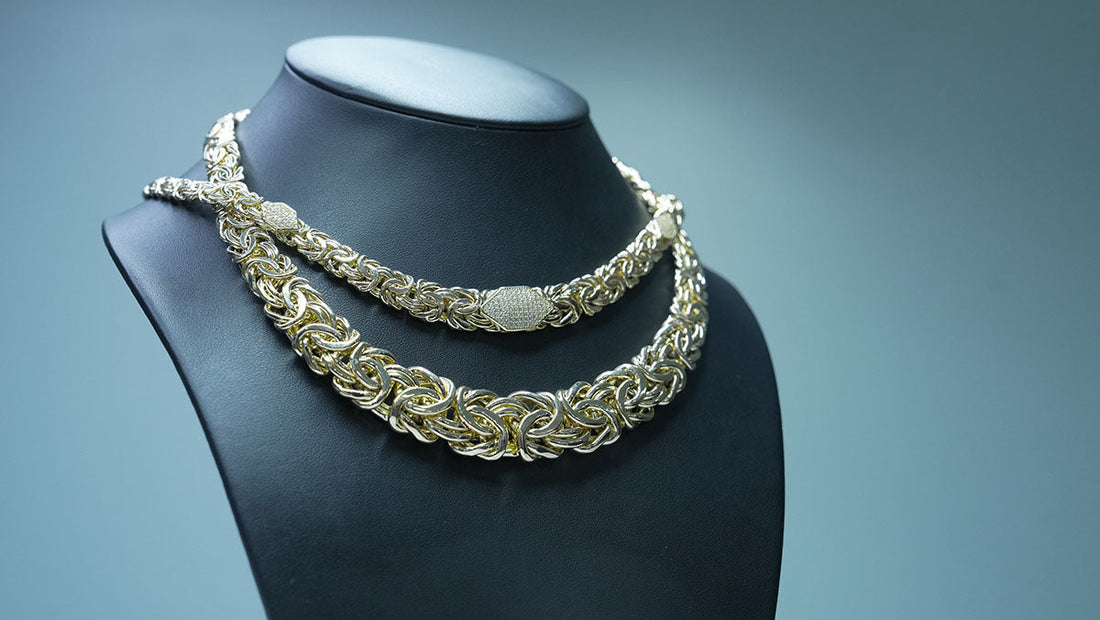
The History of Necklaces: From Antiquity to Today
Share
Why Do We Wear Necklaces? Just for Fashion? The answer is far deeper than you might imagine. From early humans to modern runways, necklaces have been much more than adornments. They have told stories, displayed power, and connected cultures. But how did it all begin? And the most curious question: what do an Ancient Egyptian pharaoh and a modern influencer have in common? Let’s explore.
The Origin of Necklaces: Where It All Began
The history of necklaces dates back over 40,000 years. The first necklaces weren’t made of gold or precious stones, but of bones, shells, animal teeth, or seeds. Our ancestors didn’t wear them just for beauty: these necklaces served as protective talismans, symbols of tribal belonging, or even hunting trophies.
Over time, these pieces became increasingly elaborate. As humanity discovered new materials and techniques, necklaces evolved, reflecting wealth, social status, and the beliefs of each era.
Egypt and Mesopotamia: Symbols of Power and Eternity
In Ancient Egypt, necklaces were essential. Pharaohs, priests, and nobles wore imposing pieces made of gold and stones such as lapis lazuli or turquoise, often in highly symbolic shapes. One of the most famous designs was the usekh collar, a broad necklace that rested on the chest and represented divine power.
In Mesopotamia, necklaces also held religious significance. They were buried with the dead as protection in the afterlife. This is where an enduring idea emerged: jewelry as part of our identity, even beyond death.

Greece and Rome: Beauty, Elegance, and Sophistication
With the Greeks, jewelry evolved in a more artistic direction. Necklaces became more delicate, featuring shapes inspired by nature—leaves, flowers, and animals. Beauty was the primary goal.
The Romans, meanwhile, expanded the use of necklaces throughout society. From upper-class women to soldiers wearing medallions as recognition, necklaces were both decorative and symbolic. They were also pioneers in using cameos and carved gemstones.
The Middle Ages: Faith and Protection
During the Middle Ages, necklaces carried spiritual significance. Many featured crosses, religious medals, or relics. Gold and silver remained present, but the focus shifted to faith. This era also saw the emergence of iconic necklaces linked to European royalty, which later influenced Renaissance jewelry.
Renaissance and Baroque: Opulence and Detail
With the Renaissance, art permeated every aspect of life—including jewelry. Necklaces became more elaborate, with carefully selected gemstones. The aristocracy competed to own the most striking pieces.
During the Baroque period, excess was the rule. Jewelry was large, ornate, and necklaces reflected extreme luxury. Yet, this trend didn’t last forever.

19th and 20th Centuries: Jewelry as Personal Expression
The Industrial Revolution brought new materials, new techniques, and—for the first time—the opportunity for more people to access jewelry. Necklaces as fashion accessories were born in this context. They were no longer just symbols of wealth, but expressions of personal style.
In the 20th century, each decade left its mark:
- 1920s: Long pearl necklaces, popularized by Coco Chanel.
- 1950s: Diamond chokers, inspired by Hollywood glamour.
- 1970s: Hippie necklaces, featuring natural and spiritual elements.
- 1990s: Fabric, leather, or plastic chokers—icons of pop culture.
Each style reflected the spirit of its era.
Today: Between Tradition and Reinvention
Today, we live in a fascinating era where the past inspires the present. Iconic necklaces are reimagined with new materials, minimalist designs evoke bygone times, and personalized pieces tell unique stories.
The history of necklaces remains alive, fueled by creativity and the desire for expression. Today, a necklace can symbolize love, strength, identity, or simply an appreciation for fine detail.
And the best part? You get to choose the story your necklace tells.

What Does the Evolution of Jewelry Tell Us About Ourselves?
The evolution of jewelry—especially necklaces—mirrors the evolution of our emotions, beliefs, and desires. In every era, people sought ways to adorn themselves, mark moments, protect themselves, or stand out. While materials may change, the impulse remains the same: to wear something that expresses who we are.
In a world full of choices, selecting the right necklace is more than a fashion decision. It’s a choice that connects with our very essence.
Today, just as thousands of years ago, a necklace can make a difference. It can be your amulet, your signature, your story. That’s why, at Ventura Jewelry, we believe every piece should be crafted with intention, soul, and respect for the legacy that began millennia ago… and that you are about to continue.
